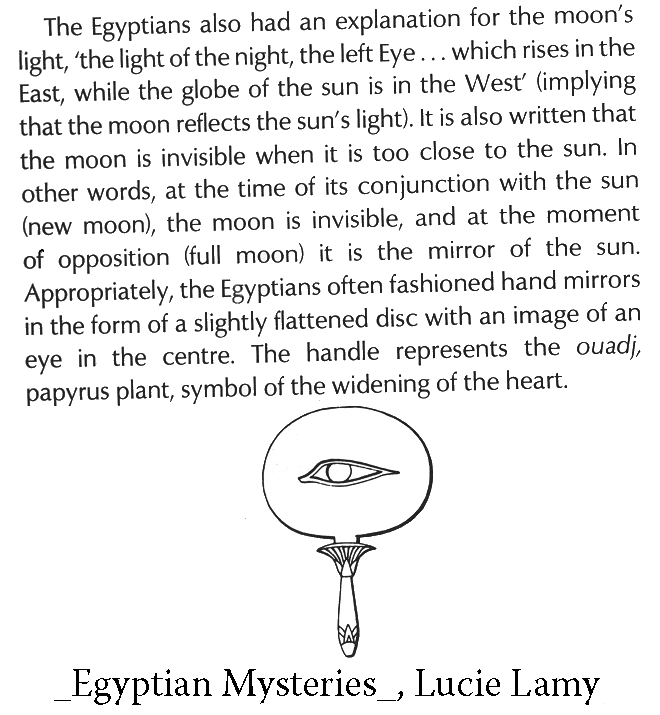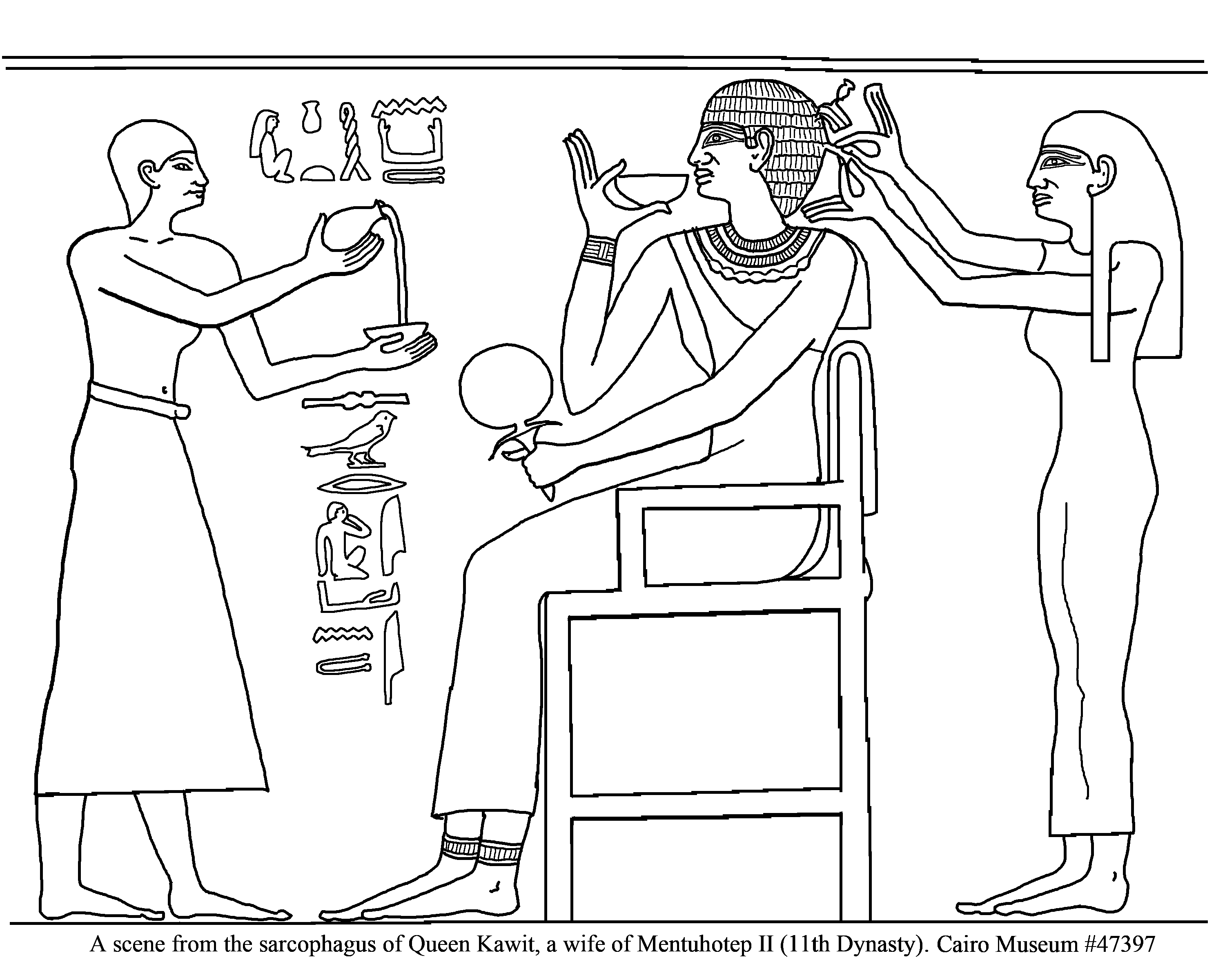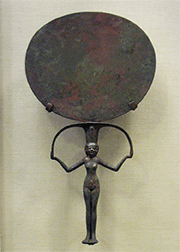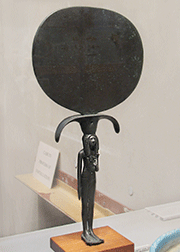 Mirror, silver and copper alloy New Kingdom, Dynasty 18, 1479-1390 B.C. Reportedly from Aswan Charles Edwin Wilbour Fund, Brooklyn Museum #37635e Photo © Joan Lansberry, May 2008-2016 |
 Mirror, silver and copper alloy New Kingdom, Dynasty 18, 1479-1390 B.C. Reportedly from Aswan Charles Edwin Wilbour Fund, Brooklyn Museum #37635e Photo © Joan Lansberry, May 2008-2016 |
|
(From the info card) "The hairstyle of the nude female figure on the handle of this mirror - thick braids surrounding the face - was popular in the middle of the Eighteenth Dynasty, allowing art historians to date the work." I noted the mirror's round shape and its similarity to the full moon. Later, I discovered this similarity is not accidental. Lucie Lamy in _Egyptian Mysteries_ explains, "at the moment of opposition (full moon), [the moon] is the mirror of the sun." The moon shaped mirrors sometimes had an eye in them: |

|
Moon or sun? "The disc of the mirror is a visual metaphor for the sun, shown in the New
Kingdom as a horizonatally elongated ovaloid - the rising sun rather than the
circular disc of noon." (From _New Kingdom Remains from Cemeteries R, V, S, and W at Qustul and Cemetery K at Adindan_, by Bruce Beyer Williams, pages 97-98) Whether the reflective moon or the emitting sun, the mirrors are definitely symbolic of a luminous heavenly body. |

 OIM has two mirrors |
 The Met museum has one |


